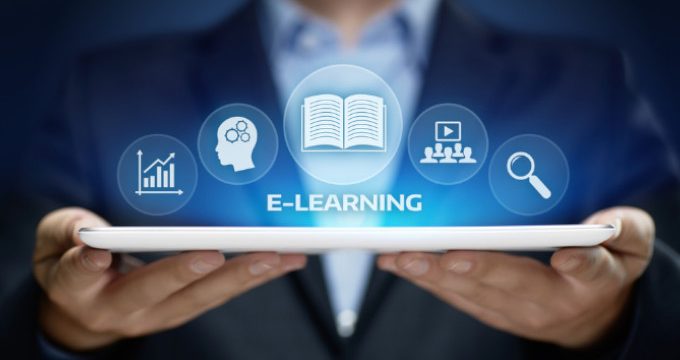2020 has been a crucial year for the e-learning industry: while the trend towards digital education has been developing over decades, the pandemic crisis has accelerated e-learning adoption. Moreover, during the lockdown, e-learning was the only way schools and organizations could sustain an ongoing education process.
Obviously, we will have to make adjustments to 2021 predictions about the hottest trends for the e-learning industry based on the outcomes of 2020. Some steady trends that we’ve seen in recent years are going to become more prominent. Here are some of the e-learning industry predictions for the post-pandemic world:
1. Emphasis on Mobile Learning
While previously organizations were thinking of making their desktop learning solutions mobile-friendly, in 2021 we are going to witness the transition towards the “mobile-first” approach. The demand for making learning tools and platforms accessible to anyone from anywhere will shift the focus of companies to the quality of mobile learning experiences.
This, as well as the growing adoption of microlearning, is already shaping the trend towards learning experience platforms (LXP) development and adoption. Although LXP and LMS platforms have a lot in common, the former is focusing on aggregating and delivering content from different sources and providing an engaging learning experience – all while featuring an array of tools for learning assessment and career path planning.
2. Focus on student engagement
The advent of LXPs is also reflecting the pressing need for maximizing student engagement. With lockdowns reinstated and distance learning becoming ubiquitous, educators are facing the shortcomings of the distance learning model: students are finding it difficult to concentrate, have shorter attention spans, display loss of interest and motivation. Some drop out or show lower attendance rates. In 2021, we will be leveraging more tools for creating student engagement, namely:
- Gamification of learning, such as running contests, or introducing fun quizzes to make knowledge assessment more exciting
- Social learning, i.e. encouraging students to learn from each other while overcoming the lack of social interactions
- Video-learning for more vivid and graphic delivery of content
- Microlearning (especially in the corporate sector) – feeding content in small 2-7 minute chunks enabling employees to find time for professional development
3. Data-driven approach for personalized learning
For many educators, 2020 was the year when they had to fight an ongoing battle for students’ attention and think of ways to overcome the drawbacks of online learning. One of the lessons learned from 2020 was the value of a personalized approach. As it turns out, filling in knowledge gaps of each individual student works more effectively, than delivering lengthy online lectures.
Of course, such an approach requires state-of-the-art knowledge assessment for identifying knowledge gaps. In 2021, more educators will be using big data not only for evaluating students’ knowledge and skills but also for getting insights into their emotional responses and attitude.
4. The impact of 5G
2021 will be the year when 5G will finally start to deliver on the promise of reduced latency and increased bandwidth. This will have a number of implications for the e-learning industry:
Improved accessibility – slow or missing internet connection was one of the reasons why many economically disadvantaged families or people in rural areas had to settle for interrupted and inconsistent learning process during the lockdown. With 5G bringing improved accessibility, we can expect that the impact on the quality of learning will be equally positive.
The use of immersive technologies – 5G will provide enough speed and network bandwidth for technologies like AR and VR to finally make it to the classroom, enabling students to not only view a more graphic representation of learning content but also practice what they’ve learned in simulated environments. Imagine taking a tour through a human body or a throat of a volcano. Such an experience will help boost students’ engagement and radically improve workplace training.
Maximizing learning efficiency: from accelerated video download to instant personalized knowledge assessment and analytics, 5G has all it takes to deliver a better learning experience regardless of a student’s physical location. Seamless streaming of video content and improved quality of video conferencing will start to erase the difference between remote or in-person learning.
5. The Rise of Tutoring Platforms
As an extension of a trend for personalized learning, in 2021 we are expecting to see the rise in tutoring platforms using AI and ML algorithms to match students and tutors. Such platforms will require both parties to pass tests assessing the level of knowledge and expertise before suggesting a match. The emergence of such platforms will help students increase the depth of learning and improve the quality of education.
Final Thoughts:
The e-learning solutions market share is expected to reach $375 billion in 2026. Apart from the wider proliferation of distance learning, the expansion of the e-learning industry is driven by factors like content digitization and learning management systems like VARTEQ LMS switching to cloud platforms. On top of that, the growing demand for e-learning solutions from the healthcare sector acts as a major catalyst for propelling the industry growth. Established companies and startups will be willing to capture the rising trends, improve existing solutions or launch innovative e-learning platforms and apps. With this regard, the need for a reliable tech partner experienced in building e-learning tools and applications becomes evident.
Read also: Looking Back At 2020 in E-Learning: Top Challenges and Achievements
Looking to tap into the expanding potential of e-learning? Contact us now for a free consultation with our experts.

